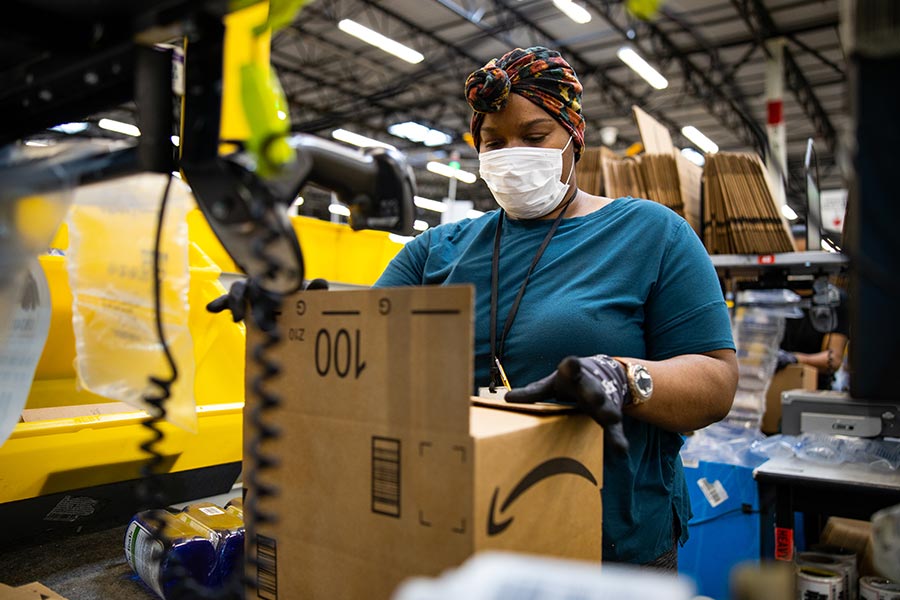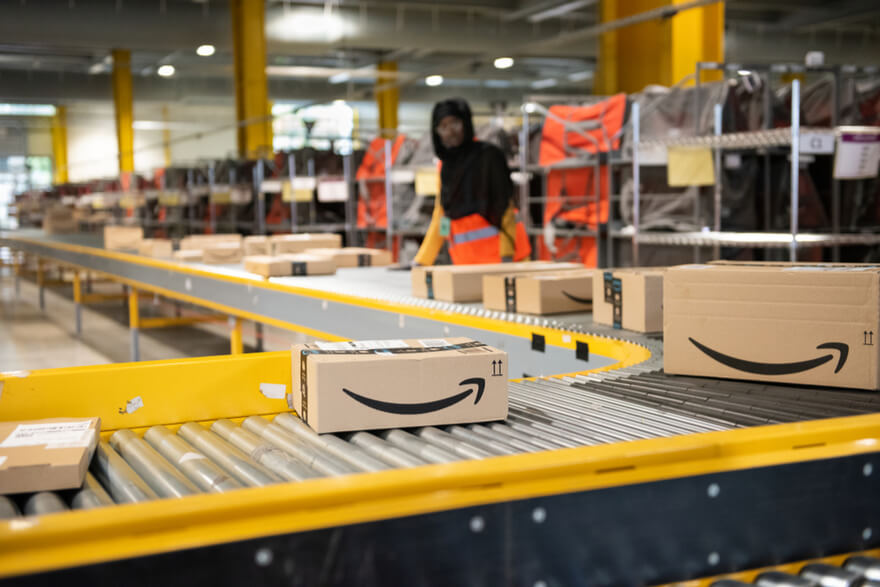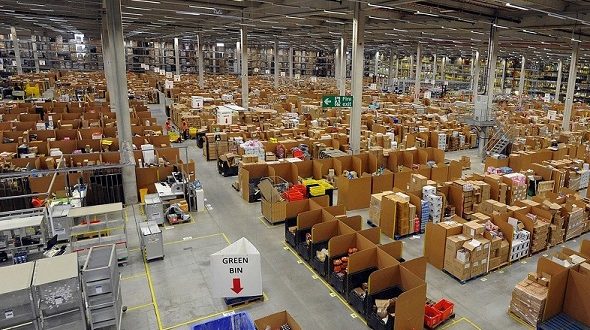By Eddie Levine, President & Co-Founder at Hub Dub Ltd. and Wholesale Breakthrough

If you utilize the Amazon platform as a sales channel, I promise this will be well worth your time.
Amazon’s recent announcement of sweeping changes related to COVID-19 will undoubtedly impact every brand owner, third party (3P) seller, and first party (1P) vendor utilizing the platform.
Initially, I was tempted to post my overall thoughts as soon as news broke, but after 8 years on Amazon, I’ve learned that it’s best to wait and let the news settle, see how others react, and then adjust your own sails appropriately. Panic never got me very far in business.
Let me start off by providing my insight on Amazon’s announcement by breaking apart and identifying the important areas: “Given the unprecedented challenges the COVID-19 pandemic has placed on all of us, we are preparing early to deliver a great holiday season.”
There is immense weight to this statement right off the bat. We all know Amazon has made significant advancements by essentially taking over logistics as we know it, and more recently building out an infrastructure that can support a Prime 1 Day model. The problem with that is the newfound perks with being able to receive your products within 1 day was relatively short-lived ever since COVID-19 came into the mix.

Think about this though…Amazon has struggled with getting products delivered to customers within a week let alone 1 day for months. In fact, it’s been such a tremendous undertaking that for the first time in history, offers that were fulfilled outside of Amazons FBA (fulfilled by Amazon) network were being treated equally or better than an Amazon fulfilled offering.
In traditional Amazon fashion, you commonly need to read beyond what they are putting into words to understand what they are really trying to convey. My understanding from the statement above is that Amazon is sending out a warning that despite all their efforts and investments to get ahead, these logistical challenges and fulfillment issues are not going away anytime soon.
“We’re on track to open 33 new fulfillment centers in the US this year, which will increase peak fulfillment center standard-sized product storage capacity by nearly 35 million cubic feet more than last year.”
While it is hard to know the weight of this comment for sure, I find it interesting how Amazon specifically talks about standard size capacity investments while choosing to leave off any mention of oversized or bulky products. Translation = If you sell these larger items, expect restrictions to hit you particularly hard.
“Even though it’s July, we’re preparing early for the holiday season to meet sustained increased demand, and have already reduced our own Retail product ordering to accommodate more of your products and help you continue to see sales growth.”
Ouch. This is bad news if you are a 1P vendor selling direct to Amazon. Even if you have not seen the sizes of your purchase orders decrease yet, Amazon is telling you to plan and expect for those changes soon. If you have been solely operating as a 1P vendor selling direct, you should immediately be looking into how to diversify your sales to be less reliant on being a vendor.

Everyday there are more benefits that are released in favor of the 3P side, and I don’t foresee that changing. As the third-party channel on Amazon continues to grow at record rates, Amazon clearly sees the value in ensuring they have the operational space for this business. This makes complete sense to me, especially since the goods sold in this manner are essentially on consignment until they are sold…not to mention that Amazon charges much more for their storage capabilities during the Q4 time period, and makes money on the inbound shipping in most cases.
“We are changing the IPI minimum threshold requirement to 500. Sellers below 500 will be subject to limits effective August 16, 2020 through the end of the year. The majority of sellers will not be impacted by this change. Most sellers with IPI scores below 500 will have more storage space than last year. To maximize selection for customers during peak, we are introducing ASIN-level quantity limits on products in FBA. Most products will have enough space available for over three months of sales.”
Ok deep breath…a lot to digest in this one. After reading a countless number of blogs, social media posts, and seller forum contributions, this part of Amazon’s announcement clearly drove most of the reaction. While this news was potentially, depending on each seller, panic inducing, I was not surprised in the least to see any of it. I should also mention here that when the IPI system (Inventory Performance Index…basically a measurement of a sellers turnover and management of their inventory stored at Amazon) was put into place, my prediction was that Amazon would have a minimum threshold to not only hit, but that they would also reward sellers who fell on the higher end of that numeric spectrum (1-1000 is the range) OR they would charge for their storage space differently depending on your IPI score.
While I still believe that Amazon will ultimately offer a sliding scale based on IPI for storage fees and inventory limits, this change shows just how important it has, and will continue to be to monitor your inventory levels and sell through rate.

There are a couple of things in this statement that I agree with and others that I feel warrant additional context. For example, it is worth noting that Amazon changed the minimum IPI requirement from 400 to 500 (out of 1000) overnight…without any warning whatsoever. Amazon is putting an effective date for sellers to meet or exceed the new IPI requirement by August 16th, however, given that the IPI score takes time to update (usually once a week), providing sellers with only a month to adjust to this change is not a lot of time.
While I can’t comment on the truth behind Amazons claim that most sellers will not be impacted, I can say for certain that there are thousands of sellers who will be negatively impacted by this change and many will struggle to meet the new minimum threshold because they only have a month to do so.
Another part of this statement that deserves deeper investigation is when Amazon states that most sellers with an IPI score of under 500 will have more storage space than last year. “Most sellers” can mean a lot of things, so all I will say here is that if you were a seller who had an IPI of say 400-500 last year, then this statement isn’t correct because since 400 was the minimum for unlimited storage last year, this change actually will hurt you this year if you are at say 450 come next month.
With that said, I am not giving sellers with a low IPI score a free pass either. There are adjustments such as business model and product selection that those sellers should be weighing to ensure they can continue to prosper in a COVID-19 infused Amazon market. As an entrepreneur, when changes like this come about, you commonly need to take a deeper dive into your operations to remedy the issue…there is rarely an overnight solution. This is the area that most sellers will struggle with because many are too comfortable with their business today to make the changes necessary for success tomorrow.

Last but certainly not least…ASIN level quantity limits. Ah yes, the part that all sellers absolutely hated if you were selling back when COVID-19 started. When these blanket category restrictions were first lifted a few months ago, and shortly thereafter the ASIN level quantity limits were also removed, every seller had reason to celebrate. Amid the celebrations, every seller was also hoping never to see restrictions like these put into place again. Wishful thinking for two main reasons I suppose. One, COVID-19 has not gone away, it has only started to rise again in the headlines, and two, Amazon has, as previously indicated, continued to struggle to adjust their operations to offset the increased demand
“To help you avoid storage fees for products that have not been selling and create room for more productive inventory, we are offering a free removal fee promotion for a limited time. We will waive your fees for any removal order submitted for inventory in our fulfillment centers beginning July 14, 2020.”
Amazon has offered free removals for stale or otherwise dead inventory from their warehouses as a promotion several times throughout the years. However, given the impact that COVID-19 has had on Amazon’s infrastructure, it is not surprising that we have seen this more often recently. While free removals may sound like a good idea, each seller needs to consider the potential long-term impacts of removing their inventory now and weigh it against the potential impacts to their IPI score.
For example, for a seller who has an IPI score that is extremely low and unlikely to recover by the August 16th deadline is probably better served by leaving that inventory at Amazon if it’s likely to sell throughout the year due to the fact that they will unlikely be able to replenish those kind of stock levels in the near term.
Note that my claim here assumes that same seller will not have to send in new inventory because leaving stock that isn’t selling well at Amazon now may cause a seller to be maxed out on their available storage space right off the bat come August 16th…we simply don’t know what kind of limitations Amazon will put in place next month. Therefore, in full disclosure, this statement will yield different results to each seller.
Sellers who are close to the 500 IPI should be taking a close look at their sell through rate to determine if their slower moving inventory should be left at Amazon or should be removed as part of the newly announced promotion. Considerable thought should be put into what potential impact to one’s IPI score a seller’s removal or lack of removal could cause.

There are sellers who based on their IPI and inventory situation, will do themselves more harm than good by removing their inventoryIf you are a seller who is well above the 500 IPI metric, there is likely very little reason that you would want to leave any inventory that you are overstocked on or not selling at the Amazon warehouses. Since storage costs will dramatically rise in Q4, and with removals normally assessed a fee per physical unit (but free for a limited time), consider removing inventory that will be less expensive for you to store and send back into Amazon later in the year.
One trick I like to tell sellers regarding inventory removals is to process one order per SKU and put the SKU number in the ship to details. Since Amazon ships your products back from virtually every fulfillment center they have, this will ensure that each box only contains one SKU and will make it far easier on your team to sort through the mountain of returns.
In working with a wide variety of brands and accounts daily, here are 10 additional thoughts about the Amazon announcement related to IPI minimums and storage limitations, that I personally feel are important to understand and consider:
1) While sellers technically have until August 16th to hit the 500 IPI score, enabling them to unlock their storage capacity for the balance of the year, many changes were felt overnight, immediately following Amazon’s announcement. For sellers or brands with an IPI score of under 500 right now, many are noticing that the limit for new or existing SKUs differs from that of another seller with an IPI of 500 or more. We have seen cases where one seller with an IPI in the 400’s is unable to send any stock of a certain SKU to Amazon while another seller who has an IPI over 500 can send in 200 of a net new SKU to their account. It is worth noting that 200 appears to be the number that Amazon is using for limits on SKUs that do not have a sales history on the platform
2) Sellers must realize that failing to hit the minimum required 500 for IPI by August 16th has further reaching potential consequences then just unlimited storage for the balance of the year. Since Amazon has made it clear in their announcement that the amount of inventory allowed into the FC should, for most products, be equal to a trailing 3 months sales velocity, a seller who has a blanket restriction on the amount of cubic footage they are allowed to store at Amazon may actually find they are limited to even less than 3 months velocity of stock. This is because a storage limitation is at the account level covering all SKUs that seller has listed for sale, whereas these 3-month sales velocity restrictions are at the ASIN level. Translation = ASIN level restrictions are far better than account level restrictions.
3) If you have an IPI score of under 500 right now, there is no sure-fire way to guarantee your score will increase to at least 500 within the next month. Ensure that you will be accepting of any action you take now with regards to your account or inventory regardless of what number your IPI lands on come August 16th.
4) It should be noted that ASIN level restrictions have already been put into place. Sellers must understand there is a distinct difference between ASIN level restrictions and account level restrictions, and there is nothing any seller can do right now to lift the ASIN level restrictions on any item completely. On August 16th, account level restrictions for the balance of the year reportedly will go into place. The wildcard here is what impacts at the ASIN level will be caused by an account level change. Will it still be a rolling 3 months limit per ASIN if you are under the 500 IPI threshold or could you potentially see the ASIN level limits drop to less than 3 months inventory based on your IPI? Time will tell.

5) Sellers must pay attention to their rolling velocity, and the trailing three months of sales per ASIN as Amazon has stated If a seller goes out of stock for a lengthy period of time during the balance of the year, or at least until these ASIN level restrictions are removed, those out of stocks are more likely to impact their ability to send enough inventory to Amazon and or remain in stock during the busiest time of the year. On the flip side, if you come back into stock and your sales pick up quickly, you should, in theory, be able to see your storage allowance for that ASIN rise…at least that is the hope. Translation = Build your inventory and sales volume up now to help during the busier holiday months.
6) Do not expect Amazon to provide any additional concessions to sellers on things like storage fee credits or lending payment delays. While such credits may have been applicable to you earlier in the year, Amazon has provided sellers with notice about their operations now, in July, for the balance of the 2020. That should provide you with ample amounts of time to make the adjustments necessary in your business to navigate through these challenging times.
7) If you foresee that as a company you potentially will run into inventory limitations at Amazon, prepare yourself now with a plan B. For that matter, even if you assume you will not have these issues, it is a good idea to still have a plan B in place. Think about your needs for additional staff, materials, hardware, and software to support your business. Do not forget to account for the time that is required to process orders daily should you need to bring this operation under your own roof.
8) Expect additional last minute and potentially unwelcome changes as COVID-19 continues to evolve. For example, if larger metropolitan areas return to a stay at home order or lockdown type status, Amazon will be forced to make additional operational adjustments to ensure they can service their customers to the best of their ability. Remember, Amazon’s flywheel revolves around the customer, not you as the seller. ‘
9) If you have made it this far in this article, and you pick one thing to remember about this entire post, let it be this point. It is paramount to understand that 1) unshipped inventory that is either created as part of pending shipment or 2) inventory that is in transit but not yet received by Amazon is and will continue to count against your ASIN level and / or account level limits. This includes stock that states delivered but not yet in receiving status! This by far is the biggest thing that tripped up most sellers back in the spring when COVID-19 brought the first wave of inventory restrictions, and will once again be one of the biggest pitfalls that sellers will fall into for the balance of this year.
Throughout all my discussions with other sellers, too many are failing to understand that Amazon is having and will continue to have delays in receiving inbound inventory at each fulfillment center. Right now, in the middle of July, we are seeing numerous Amazon locations having as much as a 4-week delay in receiving goods that are delivered to their location.
This delay is likely only going to get worse as we inch closer to the Q4 season. Lately, we have been seeing that inventory shipped via LTL is impacted the most, however, even inventory that is shipped via UPS small parcel is showing longer than usual receiving times, which is a particularly negative situation given that UPS small parcel is the most expensive way to ship (per pound) to Amazon.
Your best bet to avoid these receiving delays and to ensure your inventory flows through the sales cycle faster will be to secure dedicated deliveries for your inventory. If you are not a high-volume seller or don’t have access to dedicated deliveries, you can leverage a 3PL to consolidate your freight with other sellers’ inventory that is bound for the same fulfillment center (my company can assist you with this if needed, see information in the bio). Deliveries that have dedicated appointment times do not flow through the standard process of being scheduled for delivery once when they reach the destination terminal of the carrier they are shipped with. Instead, Amazon receives all inventory from a dedicated load at its scheduled delivery time which was confirmed prior to shipment, thereby ensuring you are not stuck without sales and/or sellable inventory. It is vital to understand the difference.
10) Breathe. Smile. Take a break. Walk around. Know your limits. I probably should have listed this as the one point you need to ensure you take away from this entire article but in all honesty, this is critical to your success and well being. You are your own worst enemy so make sure that you are listening to your own body over the next few months. Stay safe and lookout for each other.

About the author:
Eddie Levine is the President and co-founder of Hub Dub, Ltd, an eCommerce sales industry leader and robust 3PL operation. Established in 2012, Hub Dub’s vision for success revolves around their multi-channel worldwide presence, as well as the full-service brand management and logistics partnerships they develop with their clients.
Eddie carries over 15 years of combined eCommerce and logistics experience, having worked for several Fortune 500 corporations. He attended the University of Kansas and currently resides in the northern Chicago suburbs. Eddie is a widely recognized expert in the industry, having presented at dozens of webinars and conferences worldwide.
To learn how Hub Dub can help your brand thrive in a challenging eCommerce market, or to partner with us on your logistics needs, contact the sales team at: [email protected] [24×7]



















